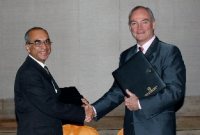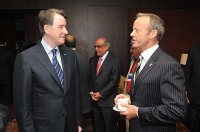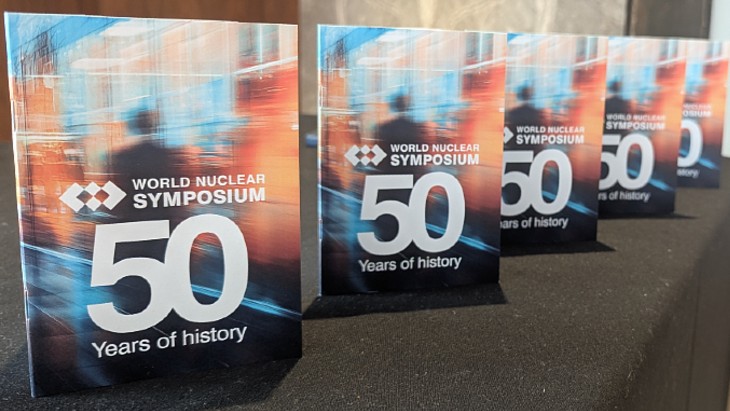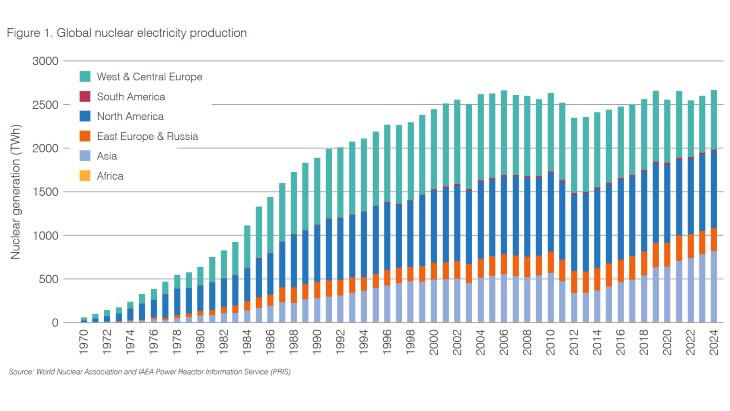Indian nuclear component maker Larsen & Toubro (L&T) has celebrated a second link-up with a Western firm in as many weeks. The company will team with Atomic Energy of Canada Ltd (AECL) under a new memorandum.
 |
| M V Kotwal and Hugh MacDiarmid celebrate their deal in Mumbai yesterday |
The memorandum of understanding with Atomic Energy of Canada came during a Canadian trade mission to India, in which a certain focus was placed on the nuclear industry. No firm commercial deals can yet be made between Indian and Canadian firms until the two countries have signed a nuclear cooperation agreement, but this is expected imminently. The USA, however, has signed off such an agreement with India and Westinghouse made a deal last week towards construction of modules for its AP1000 reactor.
L&T holds the American Society of Nuclear Engineers' N-Stamp, the internationally-accepted standard for makers of nuclear-grade pressure vessels and equipment.
L&T said in a statement that it had "joined hands" with AECL "to develop a competitive cost/scope model for the ACR-1000," an advanced power reactor, whose design represents a hybrid of AECL's earlier pressurized heavy-water reactors and the pressurized light-water models used very widely across the world. Advantages of the design include that its uranium fuel requires less enrichment than light-water models, and that it can be refuelled during operation avoiding the need to shut down.
 |
| The Canadian mission was led by Stockwell Day, the country's minister of international trade and the Asia-Pacific gateway, pictured here on the right with Lord Peter Mandelson, the UK's business secretary, who was leading a mission from his own country. |
"Upon completion of the indicative cost/scope model, AECL and L&T agree to begin discussions to develop nuclear power plants in India on EPC (engineering, procurement and construction) basis," said the Indian firm. The memorandum was signed by Hugh MacDiarmid, president and CEO of AECL, and M V Kotwal, senior executive vice president of L&T in Mumbai yesterday.
AECL collaborated with the Babha Atomic Research Centre to build the Rawatbhata PHWR, using the Canadian Douglas Point unit as a reference in 1964. However, outside the Nuclear non-Proliferation Treaty and with a unique relationship with the International Atomic Energy Agency (IAEA), India did not have in place sufficient safeguards to satisfy later changes to international trade rules. Subsequently Indian authorities developed their own PHWR designs and 15 of these now provide 340 MWe.
India has now put in place a special safeguards agreement with the IAEA and leading nuclear countries are one-by-one making cooperation agreements so that trade can resume. Indian planners are keen to import a range of advanced foreign equipment, with AECL looking well placed in the market due to India's experience with PHWR technology and existing skills development programs.




_77790.png)
_59102.jpg)
_49833.jpg)
_22592.jpg)




